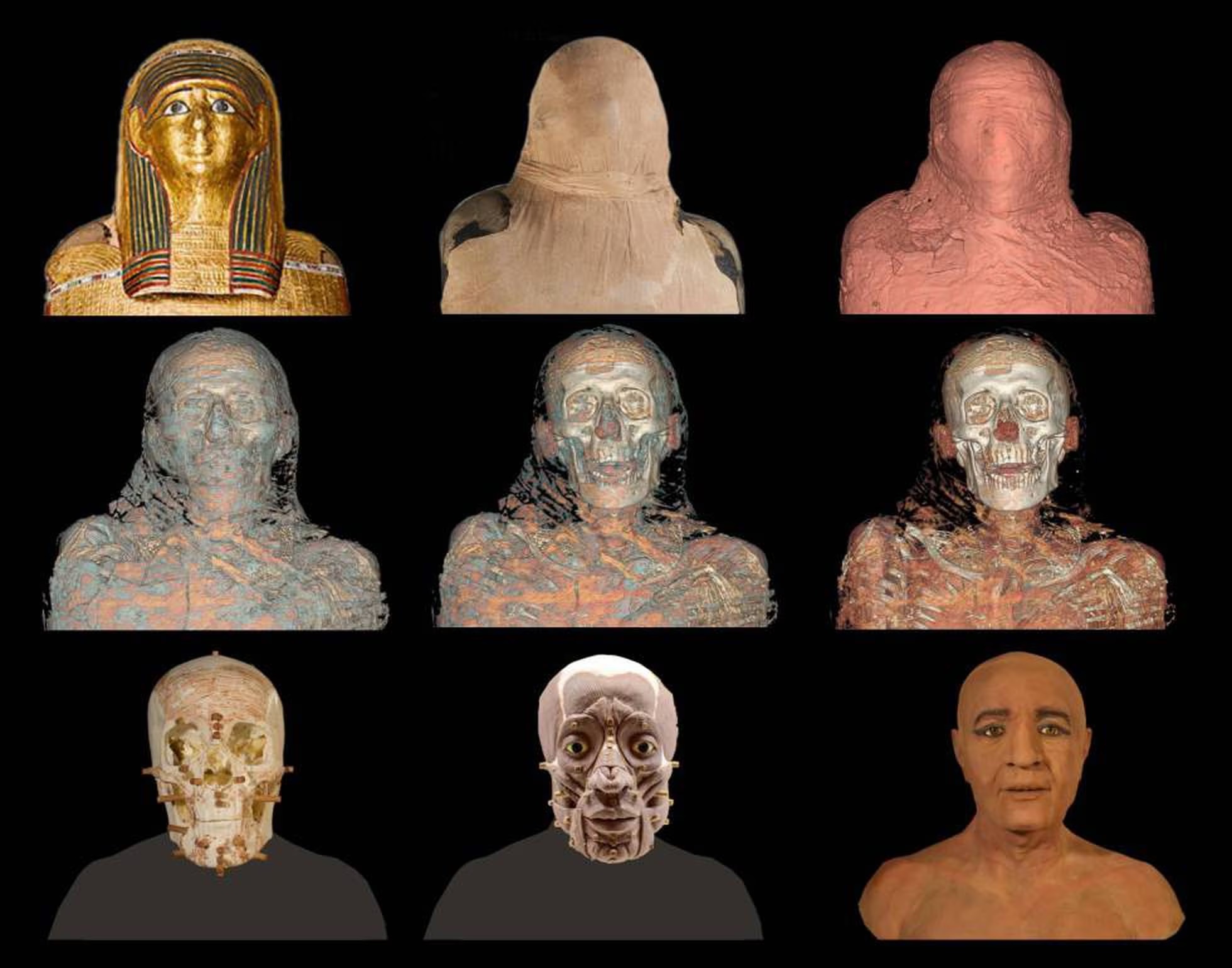
Spanish team reveals mummies’ secrets from the past with CT scan
Reconstruction of the face of Nespamedu.HOSPITAL QUIRÓN SALUD
As well as bones, researchers were surprised to find fragments of ligaments, tendons, muscles, and the heart in the Nespamedu mummy, even though it had had its internal organs removed.
“They would leave the heart because they believed that was where the essence of being and feelings were,” explained Vicente Martínez de Vega, head of the department of Diagnostic Imaging, who says the 3D reconstruction of the bodies was key to confirming their high social status, while also allowing a forensic sculptor to give shape to the real face of the mummy.
Nespamedu, who lived in the Ptolemaic period (300-200 BC), “was a doctor who practiced his profession in the temple of Imhotep, where he cured pilgrims,” says Egyptologist Marie Carmen Pérez Die, who has confirmed this was the Saqqara tomb in Egypt – clinics often existed inside the temples.
The study of the Guanche mummy has shown that mummies from the Canaries had better teeth than their Egyptian counterparts
The research has been filmed as the basis for a documentary co-produced by Spain’s state broadcaster TVE and Story Productions. “It’s difficult to explain the range of emotions we’ve experienced,” says producer Regis Francisco López, who traveled with his team to Saqqara to film. “It was like going back to the time of Nespamedu.”
The study of the Guanche mummy, who lived between the 11th and 13th century B.C. and turned up in a cave in the Herques gully in Tenerife in 1763, has shown that mummies from the Canaries had better teeth than their Egyptian counterparts.
“Dental health was bad in ancient Egypt,” says Vicente Martínez de Vega, head of the image-diagnosis department at QuirónSalud hospital, who says he found the sight of the bodies without their bandages in the scanner “unforgettable.”
“This means that the Guanche mummy had a low-sugar diet,” says his colleague Teresa Gómez Espinosa.
As well as bones, researchers were surprised to find fragments of ligaments, tendons, muscles, and the heart in the Nespamedu mummy, even though it had had its internal organs removed.
“They would leave the heart because they believed that was where the essence of being and feelings were,” explained Vicente Martínez de Vega, head of the department of Diagnostic Imaging, who says the 3D reconstruction of the bodies was key to confirming their high social status, while also allowing a forensic sculptor to give shape to the real face of the mummy.
Nespamedu, who lived in the Ptolemaic period (300-200 BC), “was a doctor who practiced his profession in the temple of Imhotep, where he cured pilgrims,” says Egyptologist Marie Carmen Pérez Die, who has confirmed this was the Saqqara tomb in Egypt – clinics often existed inside the temples.
The study of the Guanche mummy has shown that mummies from the Canaries had better teeth than their Egyptian counterparts
The research has been filmed as the basis for a documentary co-produced by Spain’s state broadcaster TVE and Story Productions. “It’s difficult to explain the range of emotions we’ve experienced,” says producer Regis Francisco López, who traveled with his team to Saqqara to film. “It was like going back to the time of Nespamedu.”
The study of the Guanche mummy, who lived between the 11th and 13th century B.C. and turned up in a cave in the Herques gully in Tenerife in 1763, has shown that mummies from the Canaries had better teeth than their Egyptian counterparts.
“Dental health was bad in ancient Egypt,” says Vicente Martínez de Vega, head of the image-diagnosis department at QuirónSalud hospital, who says he found the sight of the bodies without their bandages in the scanner “unforgettable.”
“This means that the Guanche mummy had a low-sugar diet,” says his colleague Teresa Gómez Espinosa.
Advertisements
28 August 2023
Advertisements



